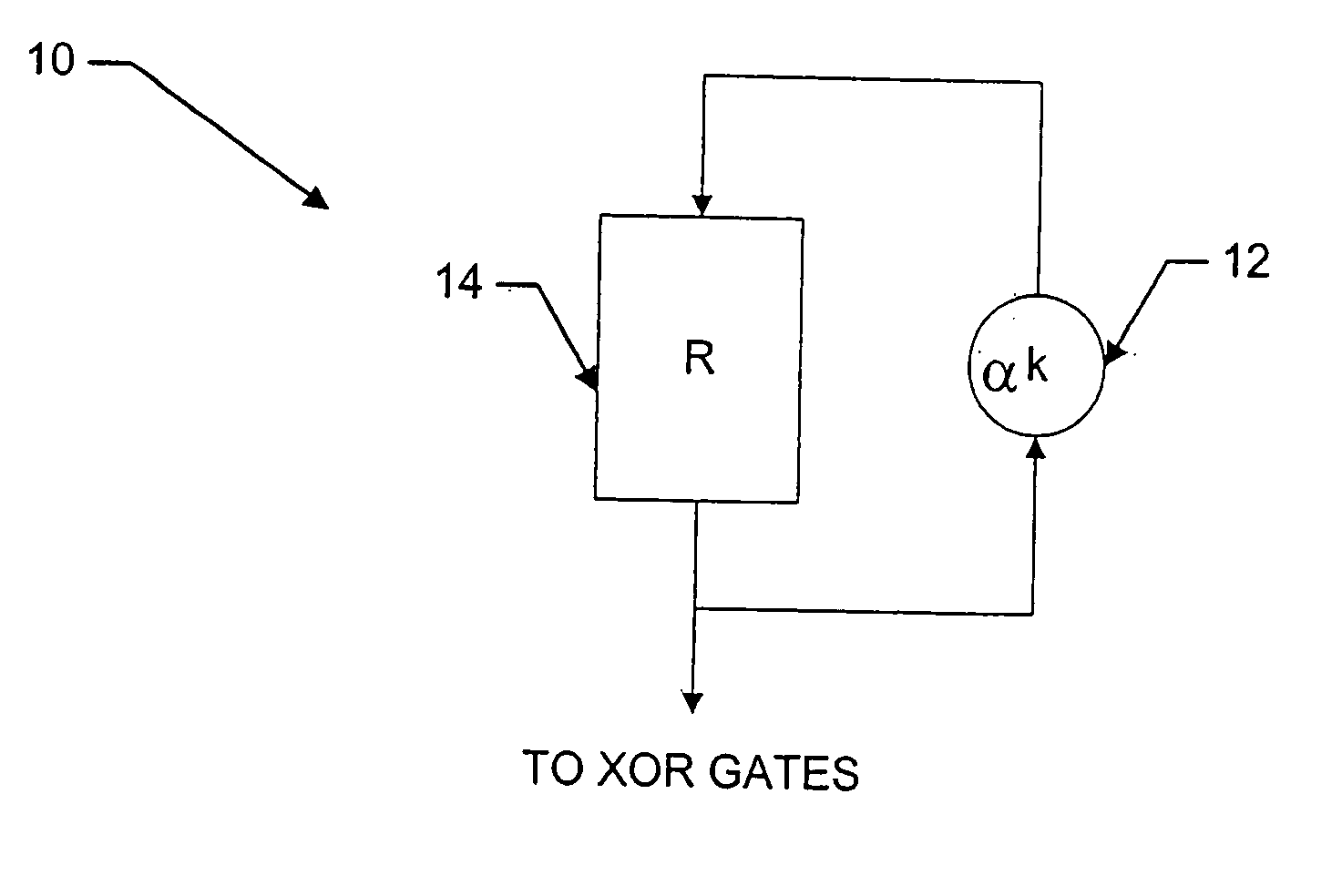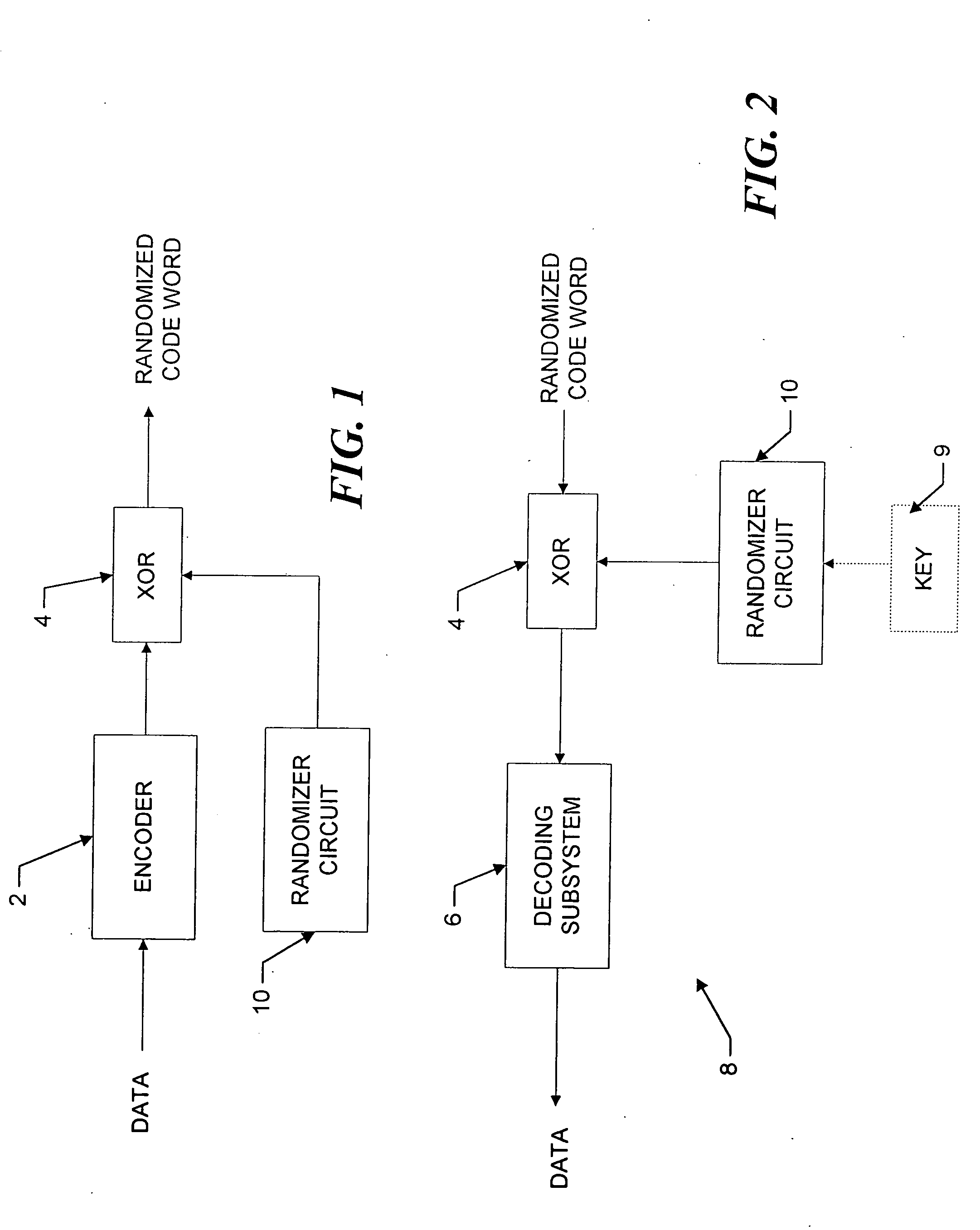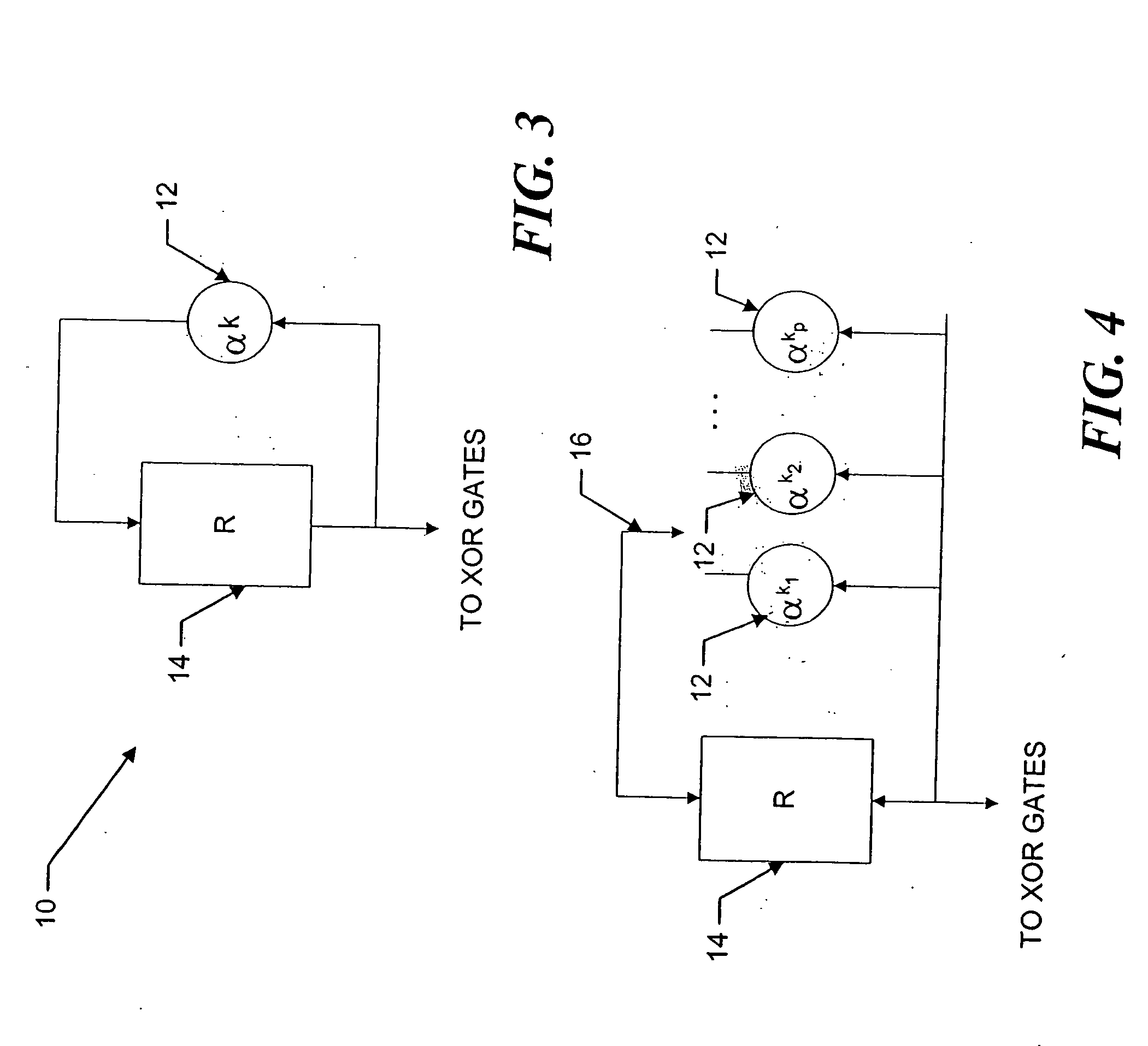Randomizer systems for producing multiple-symbol randomizing sequences
a randomizing sequence and randomizer technology, applied in the field of randomizer systems for producing multiple symbols, can solve the problems of sequences that are not necessarily optimized for mis-synchronization detection, sequences that are not appropriate for encryption of the entire code word, and known prior randomizing systems that do not provide robust mis-synchronization detection
- Summary
- Abstract
- Description
- Claims
- Application Information
AI Technical Summary
Benefits of technology
Problems solved by technology
Method used
Image
Examples
Embodiment Construction
[0015] Referring to FIG. 1, an encoder 2 encodes data in a known manner in accordance with a BCH code, for example, a distance d Reed-Solomon code over GF(2m), to produce an ECC code word. At the same time a randomizer circuit 10 produces a multiple-symbol, non-repeating randomizer sequence. The symbols of the randomizer sequence are XOR'd to the corresponding symbols of the ECC code word in XOR gates 4, to produce a randomized code word for recording or transmitting.
[0016] Referring now to FIG. 2, when the randomized code word is later retrieved or received, a decoder 8 removes the randomizer sequence from the code word in XOR gates 4, before the code word is decoded by a conventional decoding subsystem 6. Accordingly, the randomizer circuit 10 used for decoding must generate the same randomizer sequence produced by the encoder 2 (FIG. 1). If necessary, the decoder 8 uses information in a key 9 to set the randomizer circuit 10 to the appropriate initial state, as discussed below. ...
PUM
 Login to View More
Login to View More Abstract
Description
Claims
Application Information
 Login to View More
Login to View More - R&D
- Intellectual Property
- Life Sciences
- Materials
- Tech Scout
- Unparalleled Data Quality
- Higher Quality Content
- 60% Fewer Hallucinations
Browse by: Latest US Patents, China's latest patents, Technical Efficacy Thesaurus, Application Domain, Technology Topic, Popular Technical Reports.
© 2025 PatSnap. All rights reserved.Legal|Privacy policy|Modern Slavery Act Transparency Statement|Sitemap|About US| Contact US: help@patsnap.com



